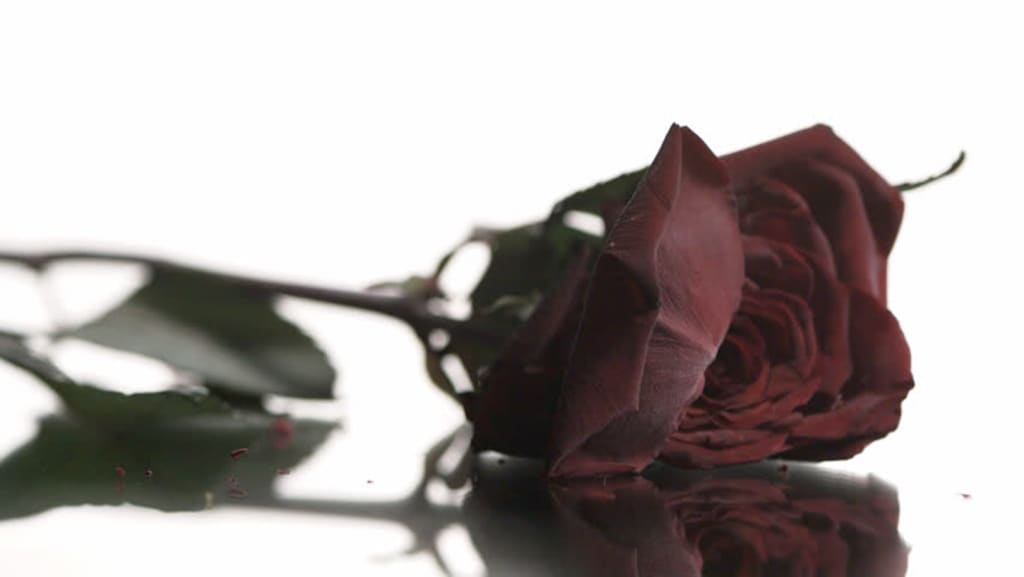H.D.’s poem, “Sea Rose” and Arianna Puente’s “The Rose and the Poppy” both have their unique ways of demonstrating the traditional symbol of the rose, by including certain figurative language like imagery and descriptive adjectives, however from comparing and contrasting both. I believe H. D’s poem is more effective in challenging the traditional symbol of the rose than Puente’s.
Both poems mention a ‘rose’ in their titles, “The Rose and The Poppy” and “Sea Rose”, they even begin their poems by referring to a ‘rose’ as well. What is different though is the way the rose is mentioned throughout both poems. Traditionally, a red rose symbolizes love, passion, and romance. H.D. states it as a “Rose, harsh rose, marred and with a stint of petals, meager flower, thin, sparse of leaf,” (H.D., Line 1-4). From the detailed adjectives and speck of imagery given like, “thin”, “marred and a stint of petals”, “harsh rose”, and “sparse of the leaf”, I conveyed that the rose wasn’t the “traditional” rose, specifically because of its physical appearance. It’s not healthy, though no pigmentation or color is disclosed, it can be assured that it’s a wilting rose being vividly described. How does this prove H.D.’s poem is more effective though? Well, H.D. continues by stating, “more precious than a wet rose single on a stem—” (H.D., Line 5 – 7) It seems as though the speaker has some admiration towards this dying rose. Even if it’s wilted it’s still beautiful, more beautiful than one that is well and alive.
This statement is more evident when the speaker quotes, “Can the spice-rose drip such acrid fragrance hardened in a leaf?” (H.D. Lines 14-16). From reading this I got a defensive tone from the speaker. It sounds like he/she is defending the rose as if he/she is stating, “So what if it’s dying? At least its fragrance is stronger than a healthy rose.” What about the fragrance though? Thinking outside of the box, from my knowledge, dry roses are more likely to hold a stronger fragrance than roses that are lively. Rose petals are dried purposely and blended into powder because of their color and fragrance. How is quick input relevant to H. D’s poem though? Well, it further proves that even beyond a rose’s death, it can provide many uses and benefits, it’s quite valuable. This is where the speaker challenges the traditional symbol of the rose. It’s not a soft-petaled, bright, healthy rose, however, it still holds value, value that a lively rose may not be able to give or provide.
On the other hand, Puente, though she mentions a ‘rose’ as well, does not have it as a main symbol or main vehicle in her poem unlike H.D. This is where her lack of effectiveness lies. She first starts by stating, “I am not a ravishing ruby red, or a semblance of purity white.” (Puente, Line 1-3). She includes imagery and alliteration, mentioning the rose’s colors, “ravishing ruby red” and “semblance of purity white.”. It seems she does start off strongly referring to a traditional rose by providing certain terms connected to it, like a “token of comfort” (Puente, Line 5), “romance” (Puente, Line 6), and “Valentine’s Day” (Puente, Line 19) however, her poem takes a twist when she states, “I am wild in the fields of green and blues. Electric orange- like tangerines in an orchard of trees, my skin’s perfume meshed in the summer breeze.” (Puente, Lines 12-16). From the depictive adjectives, “fields of green and blues”, “Electric orange”, and “Tangerines”, it makes it evident that the speaker is not being expressive about a rose after all, she’s regarding a California poppy flower. This diminishes the effectiveness of challenging the traditional symbol of the rose since it demonstrates that’s not the main context in her poem. Puente does not challenge the symbolism of a traditional rose, she goes along with it, the speaker only states that individually she is not a rose, she is more of a poppy. This is why I believe H.D.’s “Sea Rose” was the most effective in challenging the traditional symbol of the rose than Adrianna Puente’s “The Rose and The Poppy”. His poem stays relevant with just a rose, it deflects on the physical appearance of a traditional one, and his poem completely challenges the conventional, idealistic perspective of a traditional rose.

